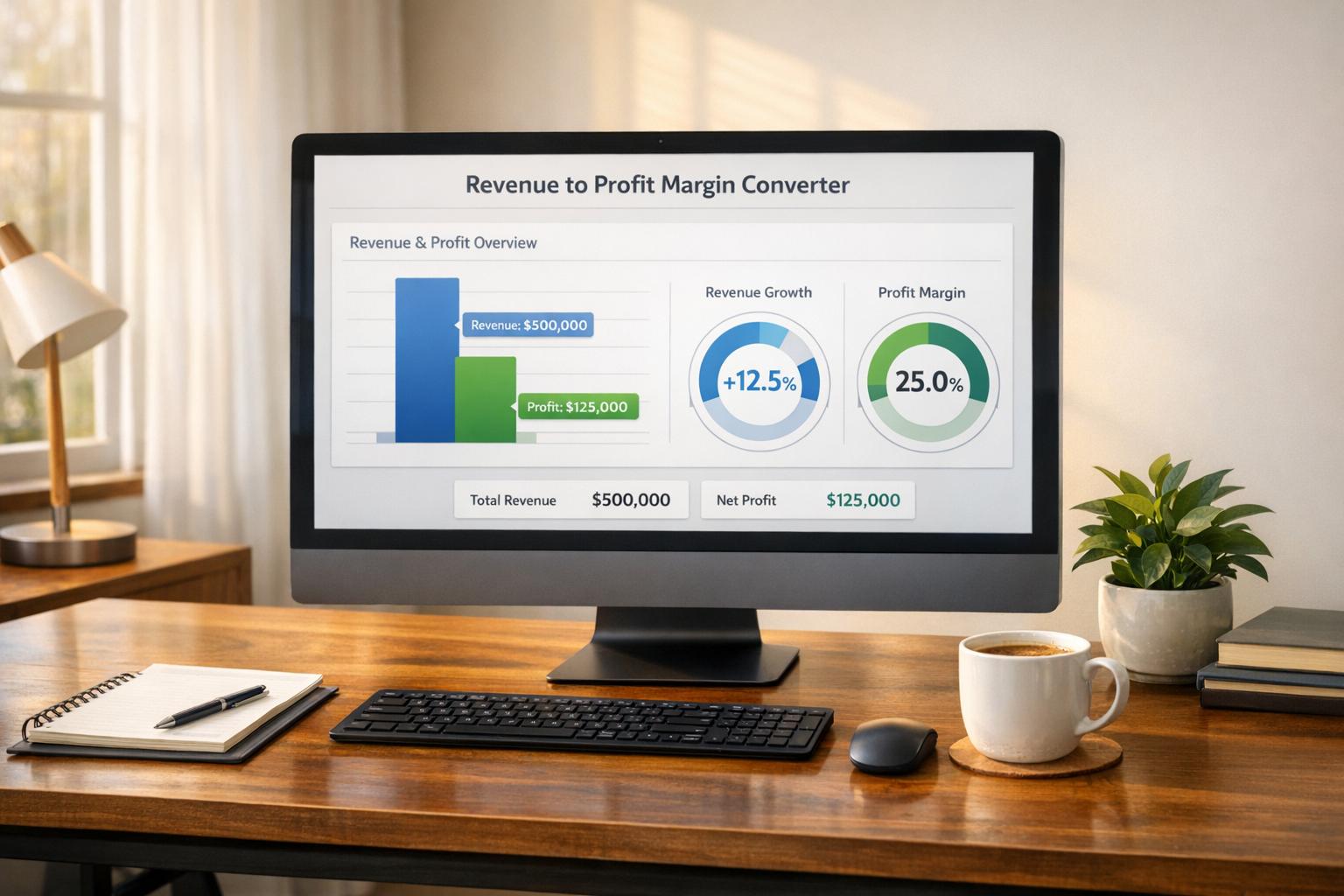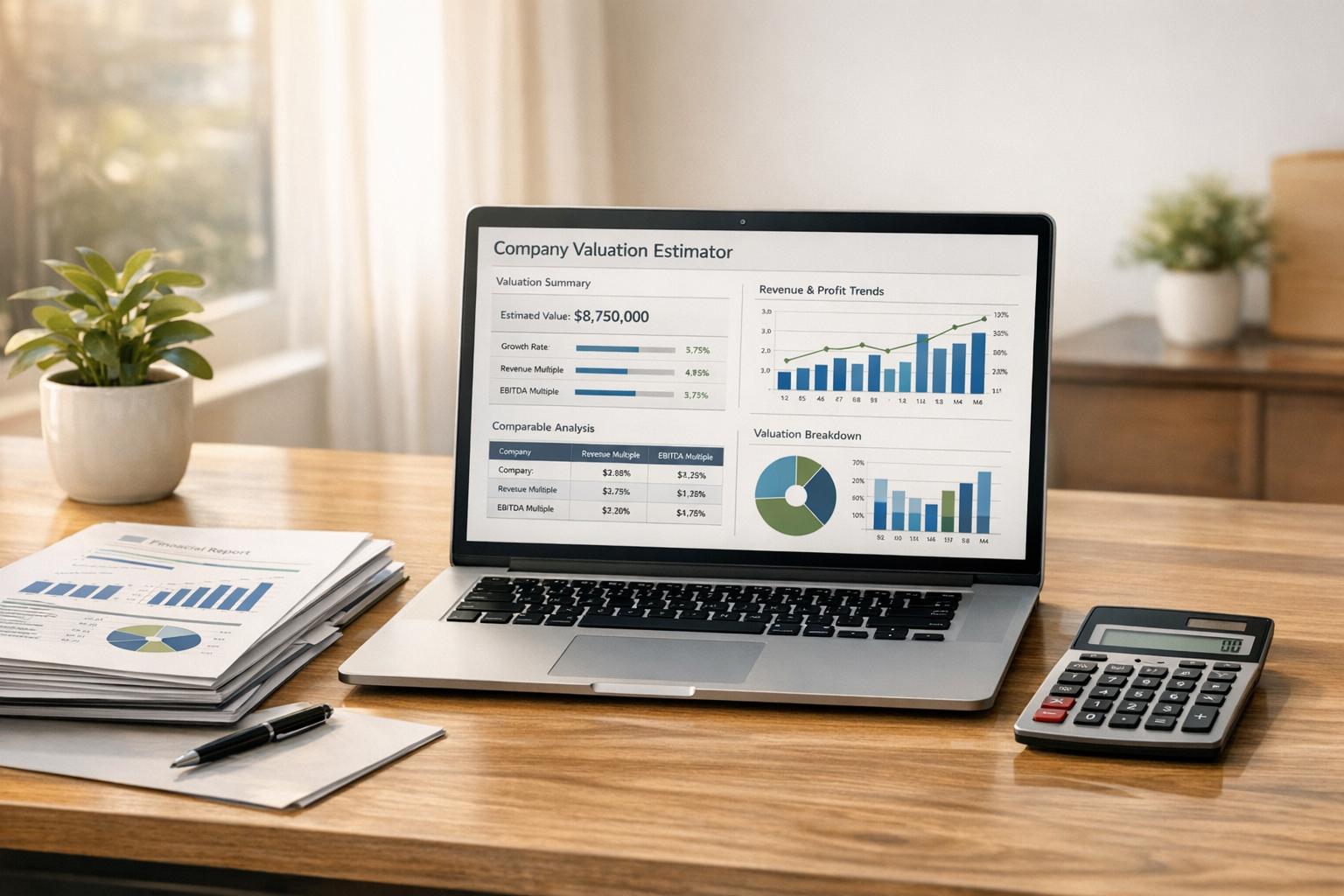How AI Predictive Analytics Improves Cash Flow Forecasting

AI-powered cash flow forecasting is reshaping how businesses manage finances. Here's why it's a game-changer:
- Reduces Errors: AI cuts forecasting errors by 20%-50%, improving accuracy significantly.
- Real-Time Insights: Processes live data for up-to-date forecasts, unlike outdated manual methods.
- Automation: Minimizes manual work and integrates data from systems like ERP and CRM.
- Trend Detection: Spots risks and opportunities early, helping businesses stay ahead.
- Scenario Planning: Simulates market changes, regulatory shifts, and economic events for better preparedness.
Quick Comparison:
| Feature | Manual Forecasting | AI-Powered Forecasting |
|---|---|---|
| Accuracy | High error rates (up to 50%) | Errors reduced by 20%-50% |
| Update Frequency | Monthly or quarterly | Real-time |
| Data Sources | Limited (spreadsheets) | Multi-source (ERP, CRM, market) |
| Pattern Recognition | Human-dependent | Automatic with machine learning |
| Scenario Planning | Basic "what-if" analysis | Dynamic simulations |
AI forecasting combines advanced tools with human expertise, enabling smarter, faster decisions. Businesses using AI report benefits like reduced idle cash, improved liquidity, and better risk management. Ready to optimize your cash flow? Start small, integrate AI tools, and combine insights with strategic thinking.
How AI Improves Cash Flow Forecasting
AI-powered predictive analytics is transforming cash flow forecasting by making it more precise and efficient. IBM reports that companies using AI in this area have seen forecasting errors drop by 20% or more.
Machine Learning for Smarter Predictions
Machine learning models can process massive amounts of financial data, pulling information from ERP systems, CRM platforms, and market feeds. This automation not only simplifies data handling but also sharpens forecast accuracy.
"AI reduces the time spent collecting and entering data, and it can create more accurate forecasts by taking into account unexpected events and current economic conditions, which can be difficult to capture through traditional forecasting." - Jim Pendergast, General Manager of altLINE
The results speak for themselves. Companies using AI in cash flow management have reported an average net interest benefit of $1.04M, thanks to a 47%+ reduction in idle cash. Additionally, organizations have achieved an average free cash flow of $55M per $1B revenue through Supply Chain Finance programs. Unlike traditional methods, AI also factors in real-time data, ensuring forecasts stay relevant and adaptable.
Real-Time Data for Accurate Updates
AI processes real-time financial data to provide instant updates to forecasts, helping businesses stay aligned with market changes. For instance, Active Mutual leveraged AI to uncover revenue patterns linked to Social Security payment schedules, offering insights that traditional methods might overlook.
This technology combines various data streams to deliver actionable insights:
| Data Source | Impact on Forecasting |
|---|---|
| Sales Data | Highlights revenue patterns and customer trends |
| Accounts Receivable | Tracks payment behaviors and late payment risks |
| Market Indicators | Considers economic factors affecting cash flow |
Detecting Trends and Issues Early
AI excels at spotting trends and potential cash flow challenges before they escalate. JP Morgan, for example, saw a 90% reduction in manual work while improving accuracy in trend identification through its AI cash flow tools.
Steps to Implement AI-Driven Forecasting
Implementing AI-driven cash flow forecasting involves a structured approach to ensure it fits seamlessly into your business operations. By following these steps, companies can enhance cash flow predictions and streamline financial management.
Reviewing Current Financial Systems and Data
Start by analyzing your existing financial setup, focusing on data quality, system capabilities, and operational workflows. Key questions to consider: What problems are you addressing? How far ahead do you need to forecast? What level of accuracy is acceptable?
Here’s what to evaluate during a data review:
| Data Source | Key Focus |
|---|---|
| Historical Records | Ensure data is accurate and complete |
| Current Systems | Check readiness for AI integration |
| External Data | Assess relevance to market trends |
This review helps pinpoint the AI tools best suited to your business needs.
Selecting the Right AI Tools
Choosing the right AI tools is crucial. Look for solutions that match your specific requirements and technical environment. For example, Quadient's AI tool achieved 94% accuracy in payment predictions, demonstrating the importance of selecting tools tailored to specific functionalities.
Consider these factors when evaluating tools:
| Criteria | Description |
|---|---|
| Integration Capabilities | Must connect easily with existing systems |
| Scalability | Should handle increasing data volumes |
| Real-time Processing | Enable instant data analysis and insights |
| User Interface | Offer intuitive dashboards and reporting |
| Support & Training | Provide guidance during setup and beyond |
Once the right tool is selected, it’s time to integrate it into your workflows.
Integrating AI with Current Financial Processes
Integration requires a thoughtful approach to minimize disruptions. Begin with a pilot program to test the tool’s functionality and set up automated data connections. Training your team to interpret AI-generated insights is equally important for a smooth transition.
"When we start talking about cash flow forecasting, and how to optimize the uses of your cash, these prescriptive models are extremely powerful." - Marcus Martinsson, Global Lead for Treasury and Cash Analytics at Accenture
How AI Forecasting Supports Better Decisions
AI-driven cash flow forecasting is changing the way businesses handle financial planning. By delivering sharper insights and improving prediction accuracy, it helps companies overcome the limitations of traditional methods.
Planning for Different Scenarios and Managing Risks
AI forecasting tools can simulate various financial scenarios, allowing businesses to prepare for market shifts, regulatory changes, or unexpected events. These tools uncover risks and opportunities that might go unnoticed by human analysts.
| Scenario Type | AI Capabilities | Business Impact |
|---|---|---|
| Market Changes | Simulates effects of interest rates | Helps adjust strategies proactively |
| Regulatory Shifts | Evaluates policy changes | Ensures compliance and reduces disruption |
| Economic Events | Models unexpected disruptions | Boosts preparedness for crises |
While AI is excellent at scenario planning, its true value comes when combined with human expertise.
Combining AI Insights with Human Expertise
The best results come from pairing AI's processing power with human strategic thinking. This combination creates a hybrid model that strengthens decision-making.
| AI Contribution | Human Input | Combined Outcome |
|---|---|---|
| Advanced Analysis | Strategic Context | Better-informed decisions |
| Data Processing | Industry Knowledge | Improved risk management |
Example: Phoenix Strategy Group's Approach

Phoenix Strategy Group showcases how AI-powered forecasting can be effectively implemented. Their approach includes:
- Real-time financial analysis for accurate predictions
- Strategic use of AI insights to guide decisions
- Custom KPI development tailored through analytics
This mix of advanced technology and expert guidance highlights how businesses can enhance cash flow management. It’s a practical way for growth-stage companies to improve operations and prepare for future challenges.
sbb-itb-e766981
Comparing Older Methods to AI-Based Forecasting
Switching from traditional cash flow forecasting to AI-driven methods has completely changed the game in financial planning. While older techniques worked for years, AI-based systems are reshaping how businesses predict and manage their cash flow.
Comparison Table: Key Differences
| Feature | Traditional Forecasting | AI-Driven Forecasting | Impact on Operations |
|---|---|---|---|
| Accuracy | Manual calculations with error rates up to 50% | Machine learning cuts errors significantly | Reduces costly planning mistakes |
| Processing Power | Limited to spreadsheets | Handles complex, multi-source data (ERP, CRM, market feeds) | Faster, smarter decisions |
| Update Frequency | Monthly or quarterly | Real-time data integration and analysis | Quick reactions to market changes |
| Pattern Recognition | Depends on human input | Detects trends automatically with neural networks | Identifies risks earlier |
| Scenario Planning | Basic "what-if" analysis | Models multiple variables dynamically | Stronger contingency strategies |
| Resource Use | Heavy staff involvement | Automation reduces manual effort | Lowers operational costs |
AI-based systems go beyond traditional methods by processing large volumes of structured and unstructured data, including inputs from news and social media. This allows businesses to predict market changes and adjust strategies quickly - something manual processes simply can't achieve.
For example, Cash Flow Frog's platform includes an anomaly detection feature that flags potential issues before they escalate. This kind of proactive monitoring is a major improvement over older, reactive approaches.
Why AI-Based Forecasting Stands Out:
- Learns and improves accuracy over time with new data
- Automatically detects patterns across diverse data sources
- Provides real-time updates as conditions evolve
- Minimizes human error in calculations
- Integrates smoothly with existing financial tools
AI-powered forecasting is revolutionizing financial planning, giving businesses the tools to make smarter, faster decisions while maintaining liquidity. With these systems, companies can stay ahead of challenges and seize opportunities effectively.
Conclusion: Using AI for Better Cash Flow Management
Switching from traditional methods to AI-driven cash flow forecasting is transforming how businesses handle their finances. With the global AI financial services market expected to hit $31.71 billion by 2027, companies are finding new ways to improve their financial planning and decision-making.
Key Takeaways
AI-powered forecasting tools have shown impressive accuracy improvements, reducing errors by 20% to 50%. For instance, one company achieved 95% accuracy in forecasting accounts receivable and payable using AI technologies.
AI's impact on cash flow management is particularly noticeable in these areas:
| Area | Impact | Business Advantage |
|---|---|---|
| Data Processing | Real-time analysis of various data sources | Faster, more informed decisions |
| Pattern Recognition & Forecast Accuracy | Automatic detection of trends and anomalies, with up to 95% accuracy in A/R & A/P forecasts | Early identification of risks and improved capital management |
These benefits make it clear why businesses are increasingly adopting AI solutions to improve their financial operations.
Getting Started with AI Forecasting
For companies looking to adopt AI-driven forecasting, a well-thought-out plan is essential. Phoenix Strategy Group specializes in helping businesses integrate AI into their processes while maintaining smooth operations.
The cash flow management software market, valued at $3.99 billion in 2024, is set to grow to $9.65 billion by 2031, highlighting the rising importance of AI in financial planning. JP Morgan has already showcased the potential of AI, with their software cutting manual tasks by nearly 90%.
"Incorporating AI-driven insights into financial planning allows businesses to anticipate challenges, seize opportunities, and make confident, data-backed decisions." - Industry Expert
To successfully implement AI forecasting, businesses should:
- Start Small and Track Results: Test AI with pilot projects and measure improvements in accuracy over time.
- Combine AI with Human Expertise: Use AI insights alongside human judgment for balanced decision-making.
- Prioritize Integration: Ensure AI tools connect smoothly with existing financial systems.
FAQs
Can AI do cash flow analysis?
Yes, AI can handle cash flow analysis by leveraging machine learning models like neural networks and random forests. These models analyze massive datasets to identify patterns that humans might overlook. AI processes historical transactions, market trends, and operational data all at once, leading to more precise forecasts.
Beyond cash flow, AI also plays a key role in improving overall financial forecasting processes.
Can AI do financial forecasting?
AI has reshaped financial forecasting by combining data processing power with predictive analytics. This allows businesses to create more accurate forecasts and adjust swiftly to market changes.
"AI-driven cash flow forecasting relies on machine learning models like neural networks, random forests and ensemble models. These models outperform traditional statistical methods by analyzing vast amounts of financial datasets and spotting subtle patterns human analysts might miss." - J.P. Morgan, AI-Driven Cash Flow Forecasting: The Future of Treasury
These forecasting improvements are made possible by AI models specifically designed to handle intricate financial data.
What is the AI model of cash flow?
The AI model for cash flow utilizes machine learning algorithms to pull data from various sources and deliver accurate predictions. These models continuously learn from new data, refining their accuracy and helping businesses adapt to evolving conditions.
| Component | Function | Impact |
|---|---|---|
| Neural Networks | Process complex financial patterns | Better pattern recognition |
| Random Forests | Evaluate multiple decision paths | Higher prediction accuracy |
| Ensemble Models | Combine different forecasting methods | Stronger overall predictions |




